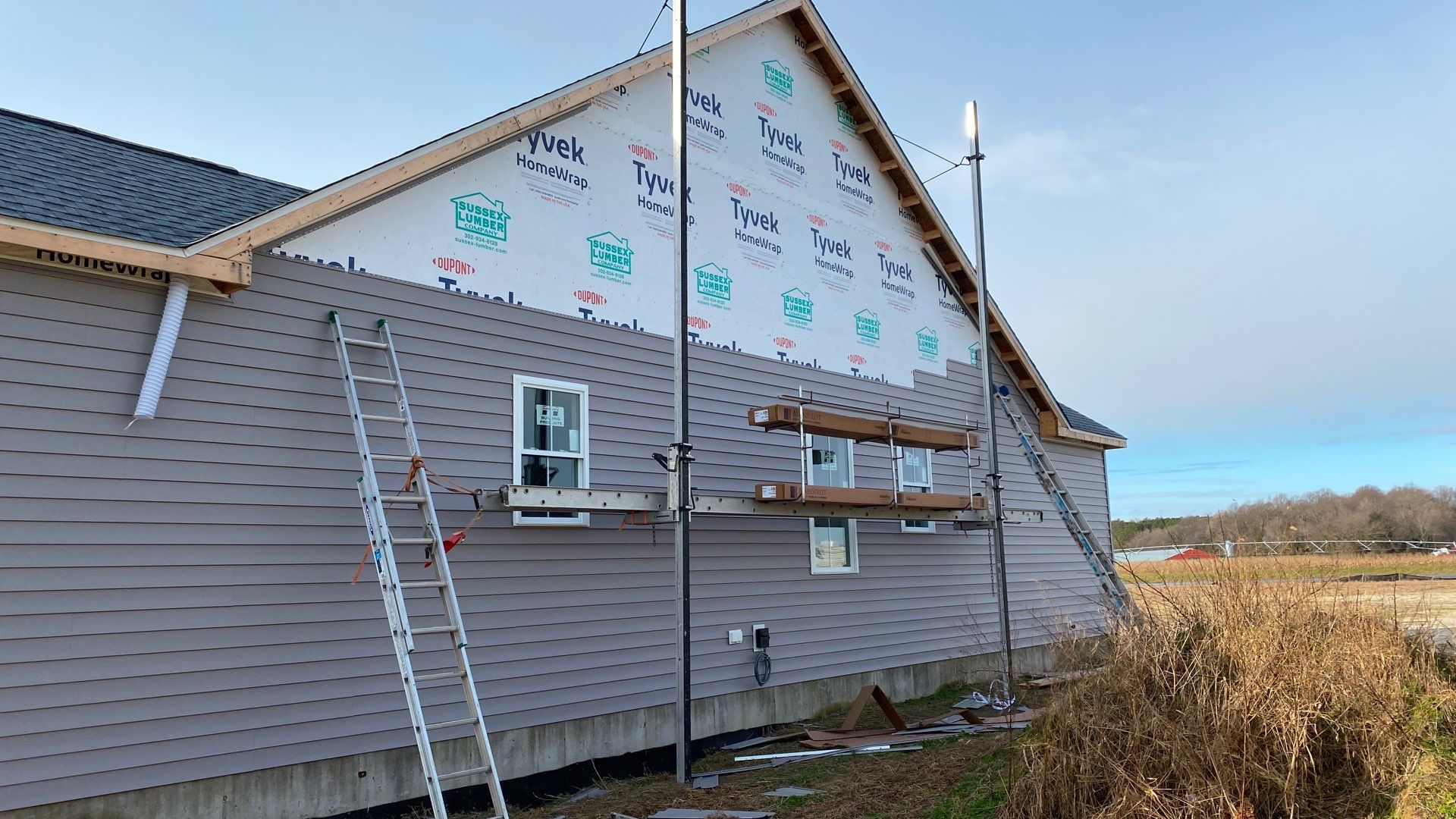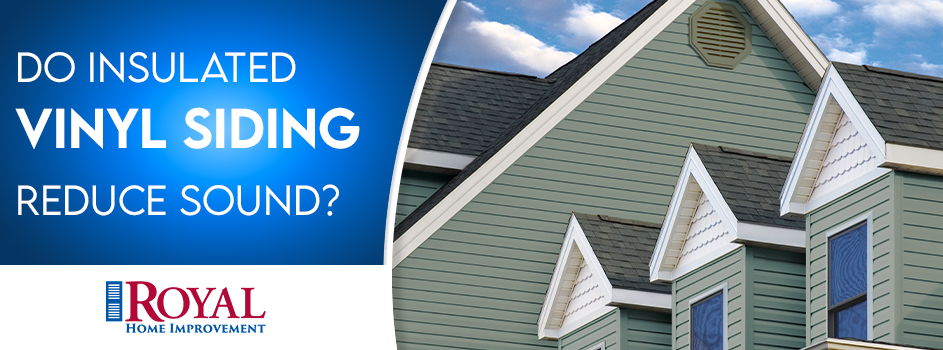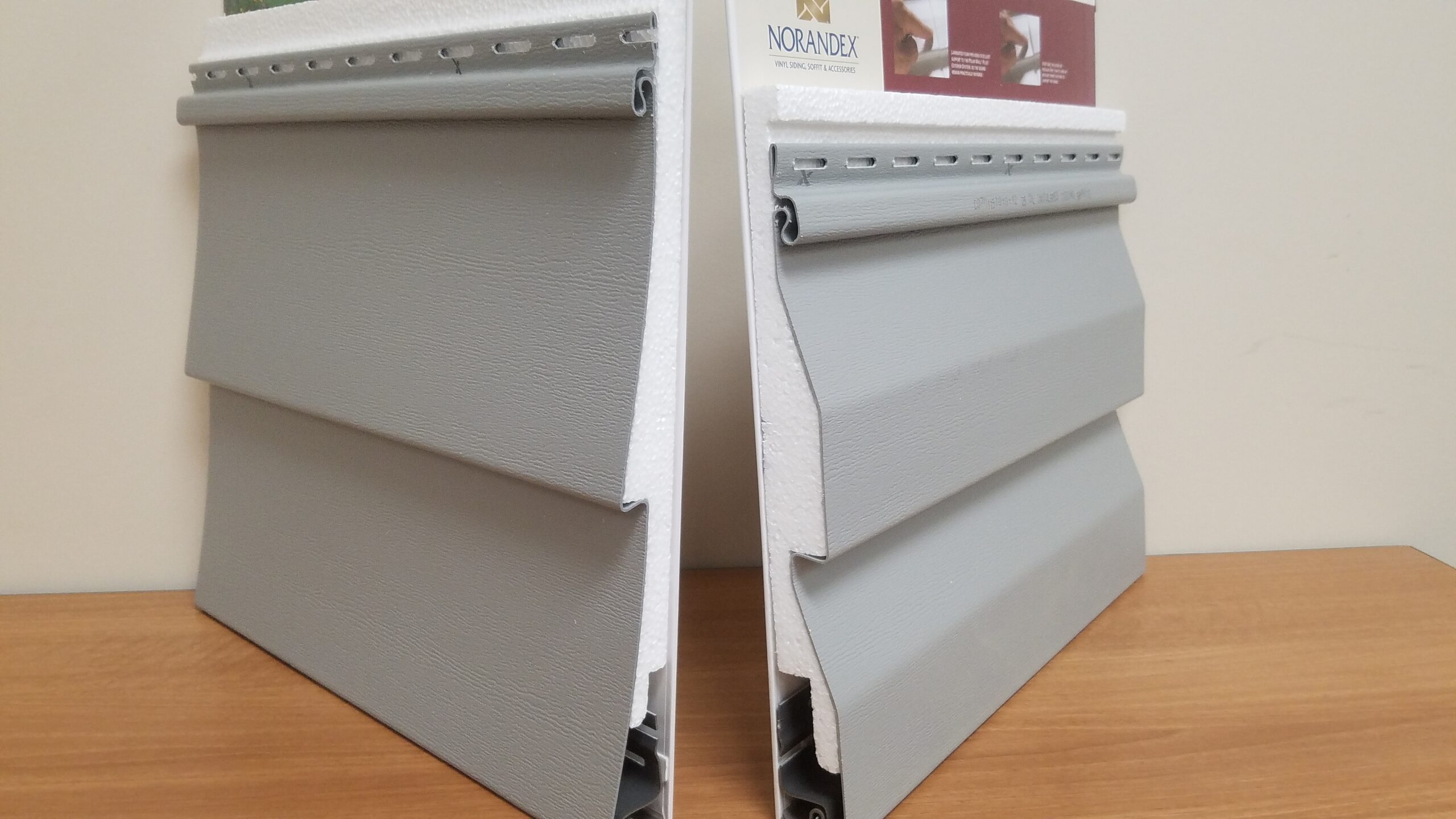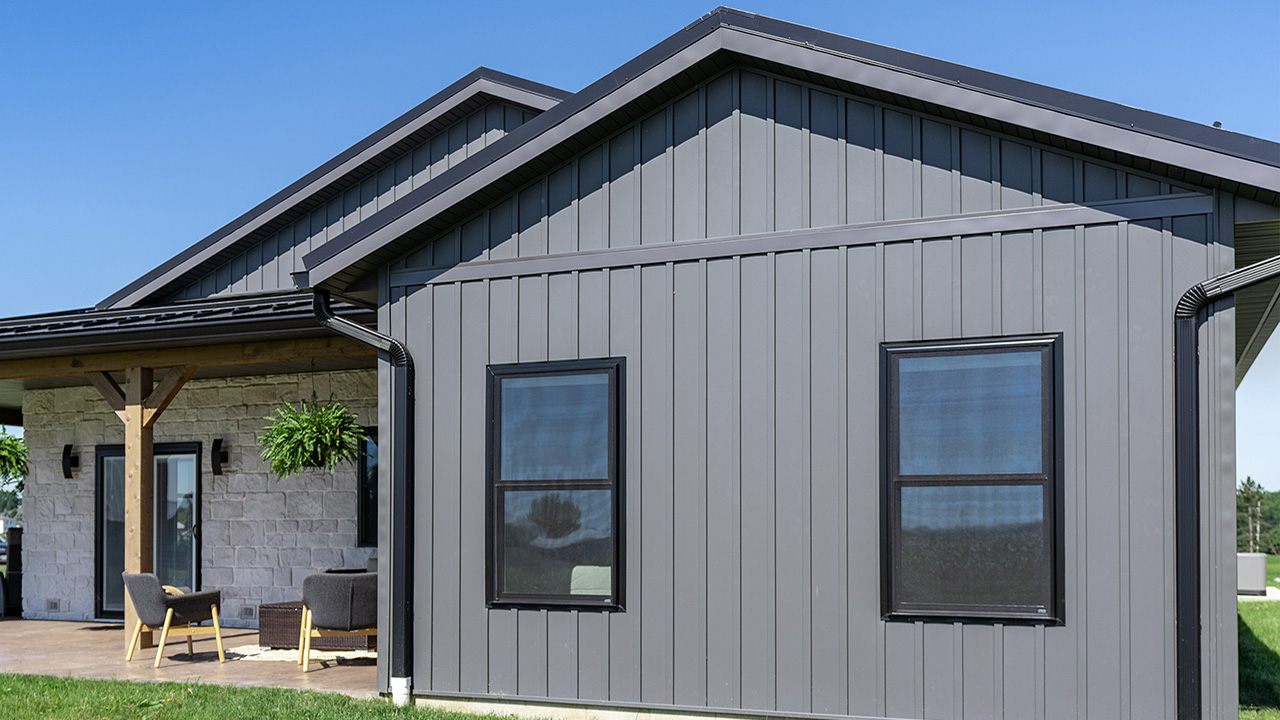Insulated Siding for Better Insulation
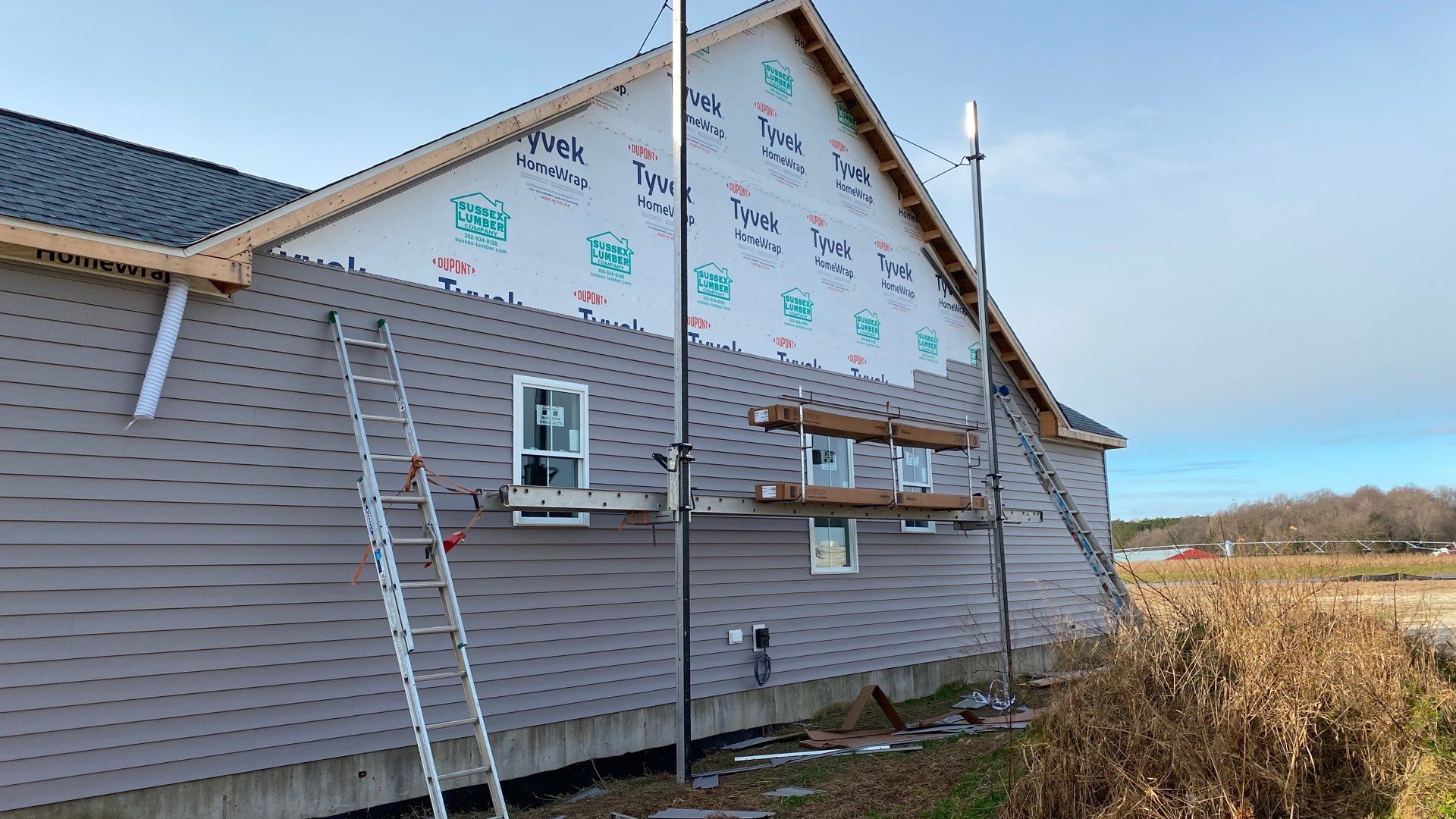
Insulated siding for better insulation: Imagine a home cocooned in warmth during winter’s chill and cool comfort during summer’s heat, all while reducing your energy bills. This isn’t a dream; it’s the reality offered by insulated siding. This guide explores the different types, benefits, installation, and cost considerations of this energy-efficient upgrade, helping you decide if it’s the right choice for your home.
We’ll delve into the various materials used, from durable vinyl to long-lasting fiber cement, comparing their thermal performance and installation methods. Discover how insulated siding significantly reduces energy consumption, leading to substantial long-term savings. We’ll also address the environmental impact, maintenance, and the aesthetic possibilities, ensuring you have a complete understanding before making this important home improvement decision.
Types of Insulated Siding
Choosing the right insulated siding can significantly improve your home’s energy efficiency and curb appeal. Different materials offer varying levels of insulation, durability, and aesthetic options. Understanding these differences is key to making an informed decision.
Insulated siding combines an outer layer of protective material with an inner layer of insulation, creating a more energy-efficient exterior wall system compared to traditional siding. This reduces reliance on heating and cooling systems, leading to lower energy bills and a more comfortable living environment. The choice of material depends on factors such as budget, climate, and desired aesthetic.
Insulated Siding Materials
Several materials are commonly used in the construction of insulated siding, each possessing unique properties and characteristics. The selection process should carefully consider factors such as thermal performance, durability, maintenance requirements, and overall cost.
| Material | R-Value | Cost | Pros & Cons |
|---|---|---|---|
| Vinyl | R-2 to R-4 (depending on thickness and foam type) | Moderate | Pros: Low maintenance, variety of colors and styles, relatively inexpensive. Cons: Can be easily damaged, less durable than other options, may fade over time. |
| Fiber Cement | R-2 to R-4 (depending on thickness and foam type) | High | Pros: Extremely durable, fire-resistant, low maintenance. Cons: More expensive than vinyl, heavier than other options, requires professional installation. |
| Foam (Polyurethane or Polyisocyanurate) | R-6 to R-8 (depending on thickness) | High | Pros: Excellent insulation properties, lightweight, can be applied to existing siding. Cons: Susceptible to damage from impact, can be more expensive than other options, requires skilled installation. |
Insulated Siding Installation Methods
The installation process varies depending on the chosen material and the existing condition of your home’s exterior. Proper installation is crucial to ensure optimal performance and longevity of the siding.
- Vinyl Insulated Siding: Typically installed using a nailing system directly onto the existing sheathing or furring strips. Overlap is crucial to prevent water penetration.
- Fiber Cement Insulated Siding: Usually requires professional installation due to its weight and the need for precise cuts and fastening. Specialized tools and techniques are often necessary.
- Foam Insulated Siding: Can be installed over existing siding in some cases, requiring careful preparation of the surface. Adhesive and mechanical fasteners may be used for secure attachment.
Energy Efficiency Benefits
Insulated siding offers a significant advantage in improving a home’s energy efficiency, leading to both comfort and cost savings. By creating an effective barrier against heat transfer, it minimizes the energy needed to maintain a comfortable indoor temperature year-round.
Insulated siding reduces energy consumption for heating and cooling by significantly decreasing the amount of heat that escapes in winter and enters in summer. This is achieved through the insulating layer within the siding itself, which acts as a thermal break, preventing heat transfer through the exterior walls. This means your heating and cooling systems don’t have to work as hard to maintain your desired temperature.
Impact on Energy Bills
The reduction in energy consumption directly translates to lower energy bills. The extent of savings depends on several factors, including climate, home size, existing insulation levels, and the type of heating and cooling system used. For example, a home in a cold climate like Minnesota might see a 15-20% reduction in heating costs, while a home in a hot climate like Arizona might see a 10-15% reduction in cooling costs. A moderate climate like that of North Carolina might experience a more balanced savings of around 12-18% across both heating and cooling. These are estimates, and actual savings can vary. For a more precise prediction, a professional energy audit considering your specific circumstances is recommended.
Long-Term Cost Savings
While the initial investment in insulated siding is higher than traditional siding, the long-term cost savings are substantial. The reduced energy bills accumulate over time, eventually offsetting the higher upfront cost. Consider a homeowner in a northern state who spends $2000 annually on heating. A 20% reduction due to insulated siding would save $400 per year. Over 10 years, this equates to $4000 in savings – potentially exceeding the initial cost difference between insulated and traditional siding. This calculation, of course, depends on the specific costs involved and the level of energy savings achieved. Furthermore, the increased energy efficiency can contribute to a higher home resale value, adding further long-term financial benefits.
Installation and Maintenance
Insulated siding offers a significant upgrade to your home’s exterior, but its long-term benefits depend heavily on proper installation and consistent maintenance. Understanding these processes will ensure your investment pays off in energy savings and curb appeal for years to come.
The installation process, while manageable for experienced DIYers, often benefits from professional expertise, particularly for complex projects or large areas. Proper installation is key to achieving the promised energy efficiency and preventing future issues.
Insulated Siding Installation Steps
Following these steps carefully will contribute to a successful installation, minimizing potential problems and maximizing the life of your siding.
- Preparation: Thoroughly prepare the existing wall surface. This includes removing old siding, repairing any damage to the underlying sheathing, and ensuring the surface is clean and dry. Any unevenness should be addressed to create a smooth, even base for the new siding.
- Framing and Sheathing (if necessary): If necessary, install new framing and sheathing to provide a solid foundation for the insulated siding. Ensure proper ventilation behind the siding to prevent moisture buildup.
- Installation of Furring Strips (if needed): Depending on the siding type and wall condition, furring strips may be necessary to create an air gap for ventilation and to ensure a level surface for installation.
- Siding Panel Installation: Begin installing the siding panels from the bottom up, following the manufacturer’s instructions carefully. Use appropriate fasteners and ensure proper alignment and overlap between panels. Take extra care around windows and doors.
- Finishing and Trim: Install all necessary trim pieces, such as corner pieces, J-channels, and window/door casings. These pieces are crucial for a professional-looking finish and protect the edges of the siding.
Insulated Siding Maintenance Best Practices
Regular maintenance is crucial for extending the lifespan of your insulated siding and preserving its energy-efficient properties. A small amount of effort can prevent costly repairs down the line.
- Annual Inspection: Inspect your siding at least once a year, looking for any signs of damage, such as cracks, loose panels, or water damage. Address minor issues promptly to prevent them from escalating.
- Cleaning: Clean your siding regularly, using a soft brush and a mild detergent solution. Avoid harsh chemicals or high-pressure washers, which can damage the siding’s surface.
- Caulk and Sealant: Regularly inspect and replace any damaged caulking or sealant around windows, doors, and other openings. This prevents water infiltration and helps maintain energy efficiency.
- Pest Control: Address any pest infestations promptly. Wood-boring insects can cause significant damage to the underlying structure, compromising the siding’s integrity.
Common Installation and Maintenance Problems and Solutions
Knowing the common issues and their solutions will empower you to handle minor problems quickly and effectively, and help you determine when professional assistance is needed.
| Problem | Solution |
|---|---|
| Uneven siding installation | Carefully check the underlying wall surface for unevenness and address it before installation. Use shims or other leveling techniques as needed. |
| Water damage | Inspect caulking and sealant regularly. Address any leaks promptly to prevent mold and rot. |
| Loose or damaged panels | Tighten loose fasteners or replace damaged panels. |
| Pest infestation | Address the infestation promptly using appropriate pest control methods. This may involve professional assistance. |
Environmental Impact
Choosing insulated siding offers a chance to lessen our footprint on the planet. By improving a home’s energy efficiency, we reduce the demand for energy production, which in turn lowers greenhouse gas emissions. This contributes to a healthier environment for everyone.
Insulated siding helps reduce the overall energy consumption of a building. Less energy used translates directly to fewer fossil fuels burned in power plants, leading to a smaller carbon footprint. This positive impact is amplified when coupled with renewable energy sources powering the home.
Reduced Carbon Emissions
The primary environmental benefit of insulated siding lies in its ability to significantly reduce a building’s energy consumption for heating and cooling. This reduction in energy demand directly translates to a decrease in greenhouse gas emissions, primarily carbon dioxide (CO2), a major contributor to climate change. For example, a home retrofitted with insulated siding might see a 20-30% reduction in heating and cooling energy use, leading to a substantial decrease in its carbon footprint over its lifespan. This positive impact is even more significant when considering the cumulative effect across many homes.
Comparison of Environmental Impacts of Different Insulated Siding Materials
Different insulated siding materials possess varying environmental impacts throughout their lifecycle, from manufacturing to disposal. Fiber cement siding, for instance, generally has a lower embodied carbon footprint compared to vinyl siding due to its use of natural materials and a longer lifespan. However, the manufacturing process of fiber cement can involve energy-intensive steps. Wood siding, a renewable resource, offers a lower carbon footprint if sourced sustainably, but its lifespan is shorter than fiber cement, and proper maintenance is crucial. Recycled materials used in some siding products can also help reduce environmental impact. A thorough life cycle assessment (LCA) is needed for a comprehensive comparison of the environmental impact of each material type.
Recyclability and Sustainability
The recyclability and sustainability of insulated siding materials vary greatly. Vinyl siding, while durable, is not easily recyclable and often ends up in landfills. Fiber cement siding, although more difficult to recycle than some other materials, can sometimes be repurposed in construction. Aluminum siding, on the other hand, has a high recycling rate. The increasing use of recycled materials in the production of insulated siding is a positive step towards greater sustainability. Choosing siding with a high percentage of recycled content contributes to resource conservation and reduced waste. Furthermore, the longer lifespan of high-quality insulated siding reduces the frequency of replacement and the associated environmental impact of manufacturing and disposal.
Cost Considerations
Investing in insulated siding is a significant home improvement, and understanding the costs involved is crucial for making an informed decision. The initial expense might seem substantial, but the long-term savings on energy bills and increased home value often outweigh the upfront investment. Let’s break down the various cost components.
Upfront Costs of Insulated Siding
Upfront costs encompass material expenses and labor fees. The price of insulated siding varies based on the material (e.g., vinyl, fiber cement, foam-core), style, and quality. A homeowner should expect to pay anywhere from $8 to $20 per square foot for the materials alone, depending on the chosen product. Installation costs typically range from $3 to $8 per square foot, influenced by factors like the complexity of the project, labor rates in the region, and the existing condition of the home’s exterior. Therefore, a typical 1,500 square foot home might require an investment of $16,500 to $42,000 for materials and labor combined. This is a broad estimate and should be verified through local contractors’ quotes.
Total Cost of Ownership Comparison
Comparing the total cost of ownership over 20 years requires considering the initial investment, ongoing maintenance, energy savings, and potential increase in home value. While insulated siding has higher upfront costs than traditional siding (such as wood or vinyl without insulation), it offers substantial long-term energy savings. For example, a homeowner might save $500-$1500 annually on heating and cooling costs, depending on the climate and the home’s existing insulation. Over 20 years, this could result in savings of $10,000 to $30,000. Furthermore, homes with energy-efficient features like insulated siding often command higher resale values, potentially offsetting some of the initial investment. A detailed cost-benefit analysis, factoring in these variables, is recommended before making a final decision. This analysis should involve obtaining multiple quotes from reputable contractors to accurately assess the project’s overall cost.
Financing Options and Rebates
Several financing options are available to help manage the cost of insulated siding installation. Homeowners can explore home improvement loans, lines of credit, or even utilize credit cards with extended payment plans. Many lenders offer specialized financing for energy-efficient home upgrades. Furthermore, several government programs and utility companies offer rebates or tax credits for energy-efficient home improvements. These incentives can significantly reduce the overall cost. For example, some states provide tax credits for installing energy-efficient siding, while utility companies often offer rebates for energy-saving home modifications. It’s essential to research available local, state, and federal programs to determine eligibility and maximize savings. Contacting your local energy provider or searching online for “energy efficiency rebates [your state/city]” is a good starting point.
Visual Appeal and Design Options
Insulated siding offers a surprising array of aesthetic choices, moving beyond the purely functional to enhance the beauty and curb appeal of any home. The variety in colors, textures, and styles allows for personalized expression, transforming a house into a true home reflecting individual tastes. This versatility ensures that there’s an option to complement any architectural style, from classic to contemporary.
Insulated siding’s visual appeal stems from its ability to mimic the look of traditional materials like wood, brick, or stone, while offering superior insulation and durability. The manufacturing process allows for intricate detailing and a range of finishes that capture the nuances of natural materials without the associated maintenance burdens. This means homeowners can enjoy the beauty of, for example, a rustic wood-look siding without the constant need for repainting or sealing.
Color and Texture Variety
The spectrum of color options for insulated siding is extensive, ranging from subtle earth tones to bold, vibrant hues. Textures also vary significantly, from smooth and sleek surfaces to those with deeply embossed patterns that mimic the natural grain of wood or the rough-hewn look of stone. This wide selection allows for a high degree of customization, enabling homeowners to perfectly match their siding to their existing landscaping, roofing, or other architectural features.
Examples of Insulated Siding Designs
Example 1: Warm, Rustic Charm. Imagine a home clad in insulated siding designed to replicate the look of cedar shingles. The color is a rich, warm brown, with subtle variations in tone to create depth and visual interest. The texture is slightly rough, mimicking the natural imperfections of real wood shingles, giving a feeling of cozy rustic charm. This style complements homes nestled in wooded areas or those with a traditional, farmhouse aesthetic.
Example 2: Modern Minimalism. This example showcases a sleek, contemporary design using insulated siding with a smooth, painted finish in a clean, bright white. The lack of texture emphasizes the home’s lines and creates a feeling of spaciousness and modernity. This design is ideal for homes with a minimalist architectural style, and it pairs well with large windows and landscaping featuring clean lines.
Example 3: Elegant Stone Appearance. Here, the insulated siding is engineered to replicate the look and feel of natural stone. The color palette is a blend of muted grays and browns, with subtle shading to mimic the natural variations in stone. The texture is subtly rough, providing visual depth and a feeling of solidity. This choice lends an air of sophistication and timeless elegance to the home, complementing both traditional and transitional architectural styles.
Enhancing Curb Appeal
The right choice of insulated siding significantly enhances a home’s curb appeal. By providing a clean, uniform, and visually appealing exterior, it instantly elevates the overall aesthetic. The durability of the material ensures the siding will maintain its attractive appearance for years to come, minimizing the need for frequent repairs or replacements. This long-term visual appeal contributes to a higher property value and creates a welcoming and inviting atmosphere.
Closing Notes
Investing in insulated siding is an investment in your home’s comfort, energy efficiency, and long-term value. From reducing your environmental footprint to enhancing your home’s curb appeal, the benefits are numerous. By carefully considering the different types of siding, their R-values, and installation costs, you can make an informed decision that best suits your needs and budget. A warmer, more comfortable, and more sustainable home awaits.
